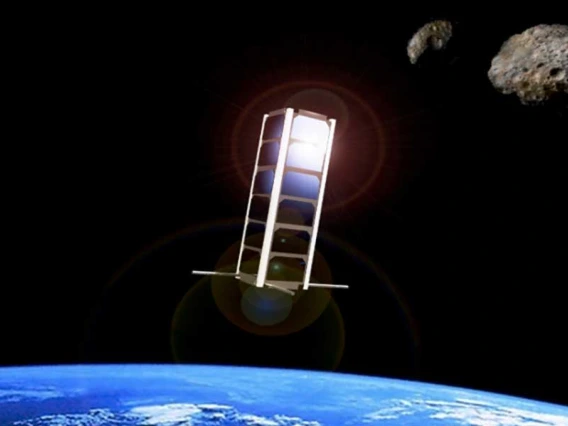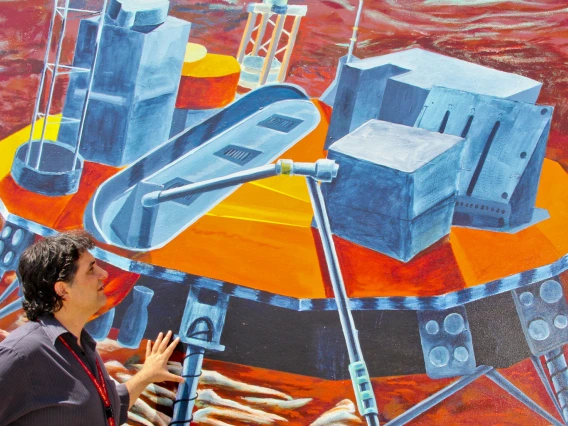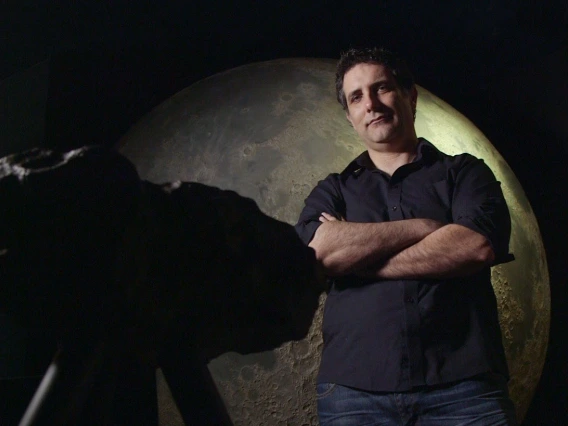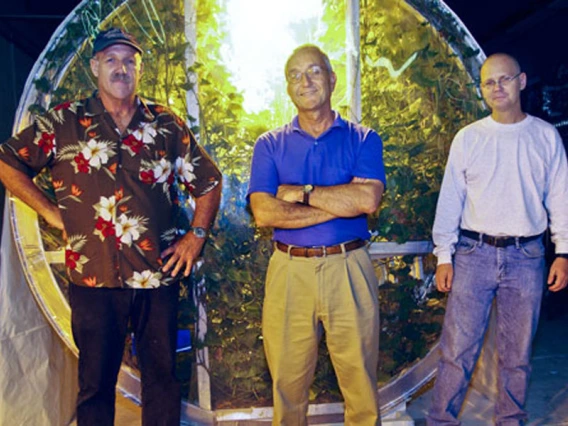The Visitor Who Never Left: Roberto Furfaro, 2021 da Vinci Fellow
The systems and industrial engineering professor, whose work centers around applying artificial intelligence methods to space exploration, has been with the college for more than 20 years.

Roberto Furfaro, 2021 College of Engineering da Vinci Fellow and systems and industrial engineering professor, stands next to the 24-inch telescope he and Vishnu Reddy, an associate professor in the Lunar and Planetary Laboratory, use in the Near-Earth Object Surveillance Mission. (Photo: John de Dios for the UA College of Engineering)
Roberto Furfaro came to the University of Arizona as a visiting student in 1998 to do his master’s thesis. The professor of systems and industrial engineering has been here ever since.
“The University of Arizona is extremely unique, in my opinion,” said Furfaro, director of the Space Systems Engineering Laboratory and the Space Situational Awareness Arizona Initiative. “I always felt like there were far fewer barriers between departments and colleges. I got a PhD in aerospace and mechanical engineering, but I developed quite a few connections at the Lunar and Planetary Laboratory, driven by my interest in space exploration. From the start, it felt like people were really open to cross collaboration.”
The appreciation between Furfaro and the university is mutual: Furfaro is the College of Engineering’s 2021 da Vinci Fellow. Each year, one exceptional engineering faculty member is selected as a da Vinci Fellow and receives a one-time grant of $10,000. The grant is made possible by donors to the college's da Vinci Circle.
“Since I got my PhD here, I’ve considered this my home,” Furfaro said. “It is one of the most meaningful awards I’ve received, because it’s a recognition of what I’m doing, despite that I’ve been here a long time. I’d like to thank the University of Arizona in general not just for this prize, but for the opportunity to have a career here.”
Eyes on the Sky
Furfaro has been fascinated by math and physics since he was a child growing up in Italy, watching cartoons about alien armies invading Earth and space robots traveling to other planets. In his career, he gets to bring his space exploration fantasies to life.
Much of the work in his lab involves space situational awareness, keeping track of objects in Earth’s orbit. All of it uses machine learning and artificial intelligence to build or enhance space systems. He’s worked with the UA Controlled Environment Agriculture Center to develop an autonomous lunar greenhouse, designed a mission to explore shadowy areas of the moon, and led student teams building CubeSats for NASA research.
From 2010 to 2016, he was the systems engineering lead for the Science Processing and Operations Center of OSIRIX-REx, a NASA mission to capture an asteroid sample and bring it back to Earth. His contributions to that mission even led to an asteroid being named after him: 133474 Roberto Furfaro. Currently, he’s the lead for the target follow-up team of the NASA Near-Earth Objects Surveyor Mission.
“For that mission, we’re designing a system which can rank asteroids and decide their importance,” Furfaro said. “It can give information to spacecraft or telescopes about which asteroids are potentially dangerous and estimate the potential for impact.”
I’d like to thank the University of Arizona in general not just for this prize, but for the opportunity to have a career here.”
Additionally, he partnered with Lunar and Planetary Laboratory associate professor Vishnu Reddy and researchers from Cyverse, UA’s computational infrastructure for handling large datasets, on a $3.3 million grant from the Air Force Research Laboratory. The project seeks to create a cyber infrastructure to improve space situational awareness.
“Roberto is a great example to our students of what you can do with an engineering degree, hard work and a willingness to collaborate and lead large interdisciplinary teams,” said SIE Department head Young-Jun Son. “We are so proud of not only his work on high-impact NASA missions and his space systems research, but of his dedication to his students and his collaborations and leadership across – and beyond – campus.”
Paying It Forward, Broadening Horizons
Furfaro advises a team of both domestic and international students, and he strives to provide them hands-on opportunities that will help them land exciting careers. He’s proud that several of his students were hired full time to work on OSIRIS-REX after their graduation.
“Roberto is a great mentor. He gives us a lot of responsibilities that help us grow professionally and personally,” said Enrico Schiassi, an Italian student who completed his bachelor’s and master’s degrees at the University of Bologna. “More importantly, he is also a great friend. He made me feel at home, although we are 10,000 km away from it. Thanks to Roberto, I had the opportunity to work on many cool projects and meet very interesting people.”
Kristofer Drozd, who earned his BS in aerospace engineering in 2015, decided to pursue a PhD after seeing Furfaro speak about his work on the OSIRIS-REx mission.
“Roberto lets his students be free to explore problems and research avenues their own way,” he said. “Perhaps most impressive is how available he is, considering how many projects he is leading. His willingness to meet, chat and reflect on my endeavors whenever I need to is what I am most grateful for.”





